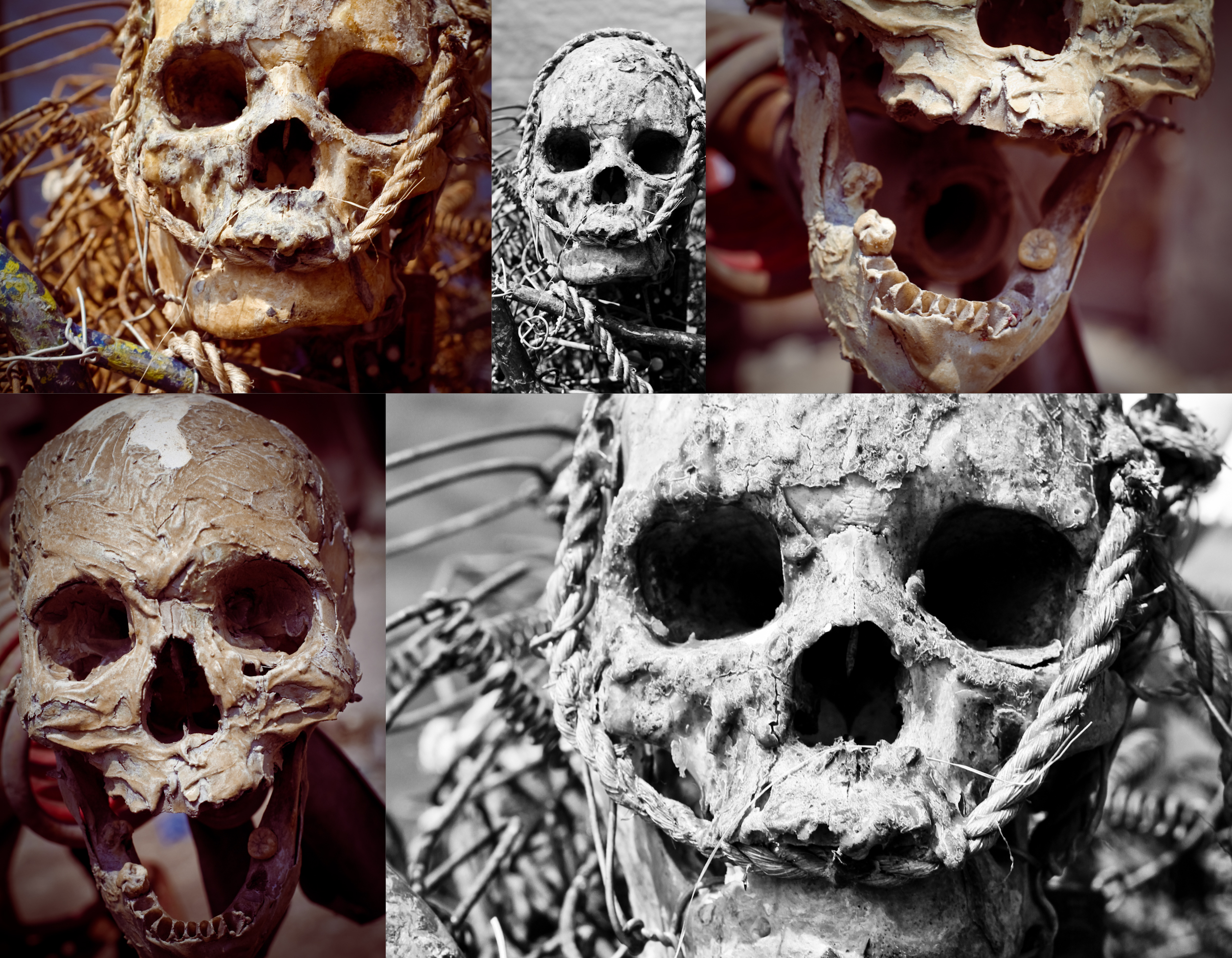Skulls turned to Found Art. These heads are left over from the earthquake of 2010 in Port au Prince, Haiti.
For me, they are practiced homework in seeking beauty to find beauty. At least these poor souls have found a home with Andre Eugene and managed to avoid the anonymity of the mass graves just outside the city.
Twinkle lights always help, too.
About Atis Resistans:
Grand Rue is the main avenue that runs a north-south swathe through downtown Port au Prince from Bel Air and La Saline to La Cimetière and Carrefour. At the southern end of Grand Rue, amongst the labyrinthine warren of back streets that line the avenue, is an area that traditionally has produced small handicrafts for the ever-diminishing tourism market. This close-knit community is hemmed in on all sides by the makeshift car repair district, which serves as both graveyard and salvation for the cities increasingly decrepit automobiles.
The artists Celeur and Eugène both grew up in this atmosphere of junkyard make-do, survivalist recycling and artistic endeavour. Their powerful sculptural collages of engine manifolds, TV sets, wheel hubcaps and discarded lumber have transformed the detritus of a failing economy into bold, radical and warped sculptures. Their work references their shared African & Haitian cultural heritage, a dystopian sci-fi view of the future and the positive transformative act of assemblage.
The artists from Grand Rue are extending the historical legacy of assemblage to the majority world. Their use of the readymade components are driven by economic necessity combined with creative vision and cultural continuity. Their work is transformative on many different allegorical levels, the transformation of wreckage to art, of disunity to harmony and of three young men, with no formal arts training, to the new heirs of a radical and challenging arts practice that has reached down through both modernist and post-modern arts practice.
